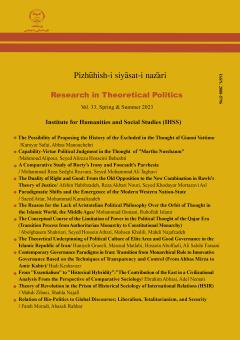The comparative study on political theory of the public and private sphere with law provides a basis for restriction of law and state and redraws public-private law boundary. Research method is descriptive-analytical. That is, firstly, the private and public sphere, acc
More
The comparative study on political theory of the public and private sphere with law provides a basis for restriction of law and state and redraws public-private law boundary. Research method is descriptive-analytical. That is, firstly, the private and public sphere, according to Hannah Arendt's theories, are described by identifying its elements. And, secondly, the elements in two spheres are analyzed in accordance with law framework and its branches generally. And, finally, the level of recognition of private and public sphere in legal system of Iran is measured. The private sphere is an area of human life that is intertwined with elements such as intangible ownership and presidency of the family, and the tendency to conceal and naturally de-legalization. Civil society is a part of private sphere; it is an area of human self-control activity into non-governmental groups. The public sphere is an area of policy-making by citizens through free conversation and action. In the legal system of Iran, the private sphere is supported overall; independence of civil society is not guaranteed, despite implicit recognition. Government makes policy, then citizens work within its framework after getting governmental permission.
Manuscript profile


